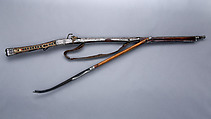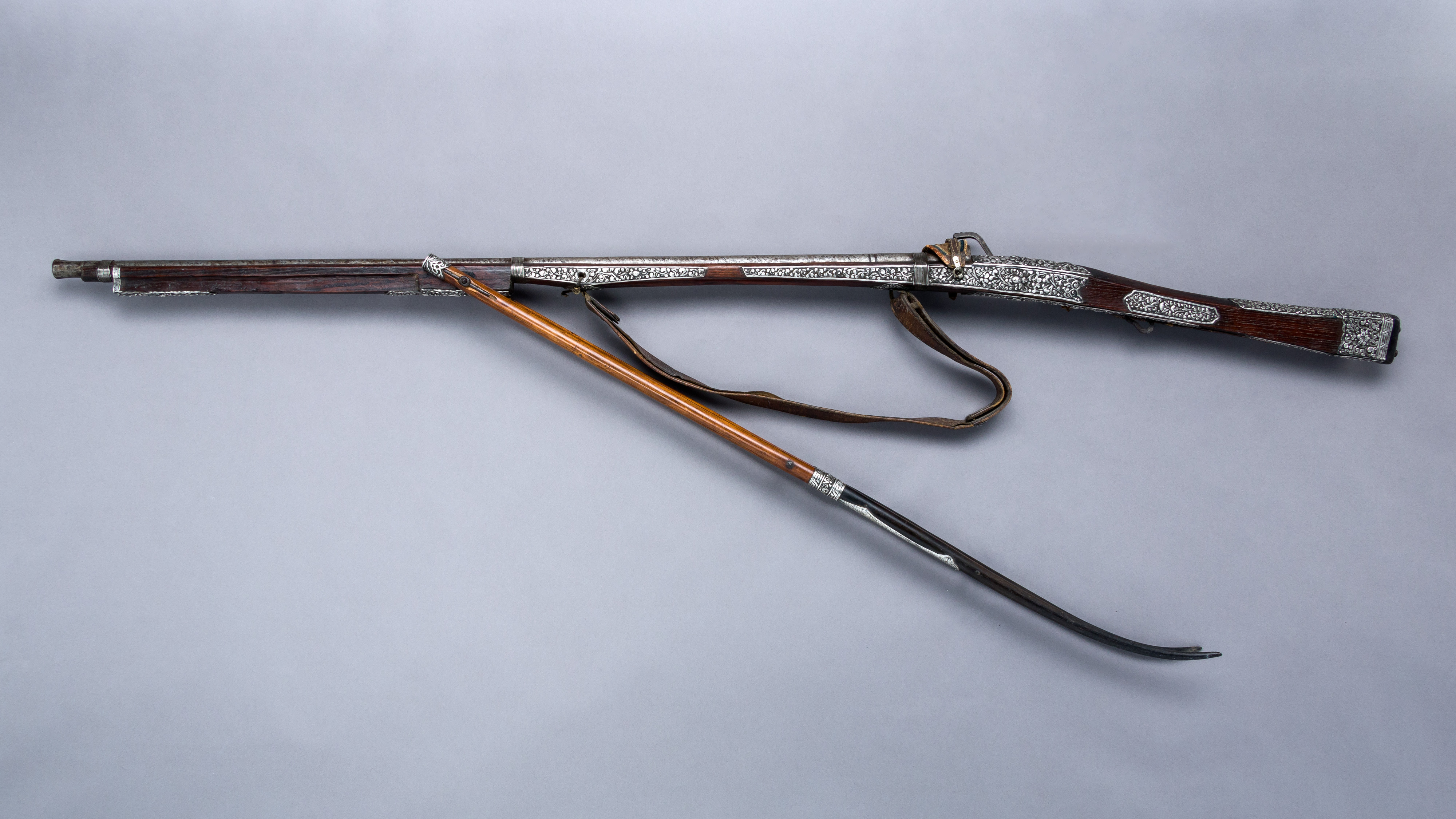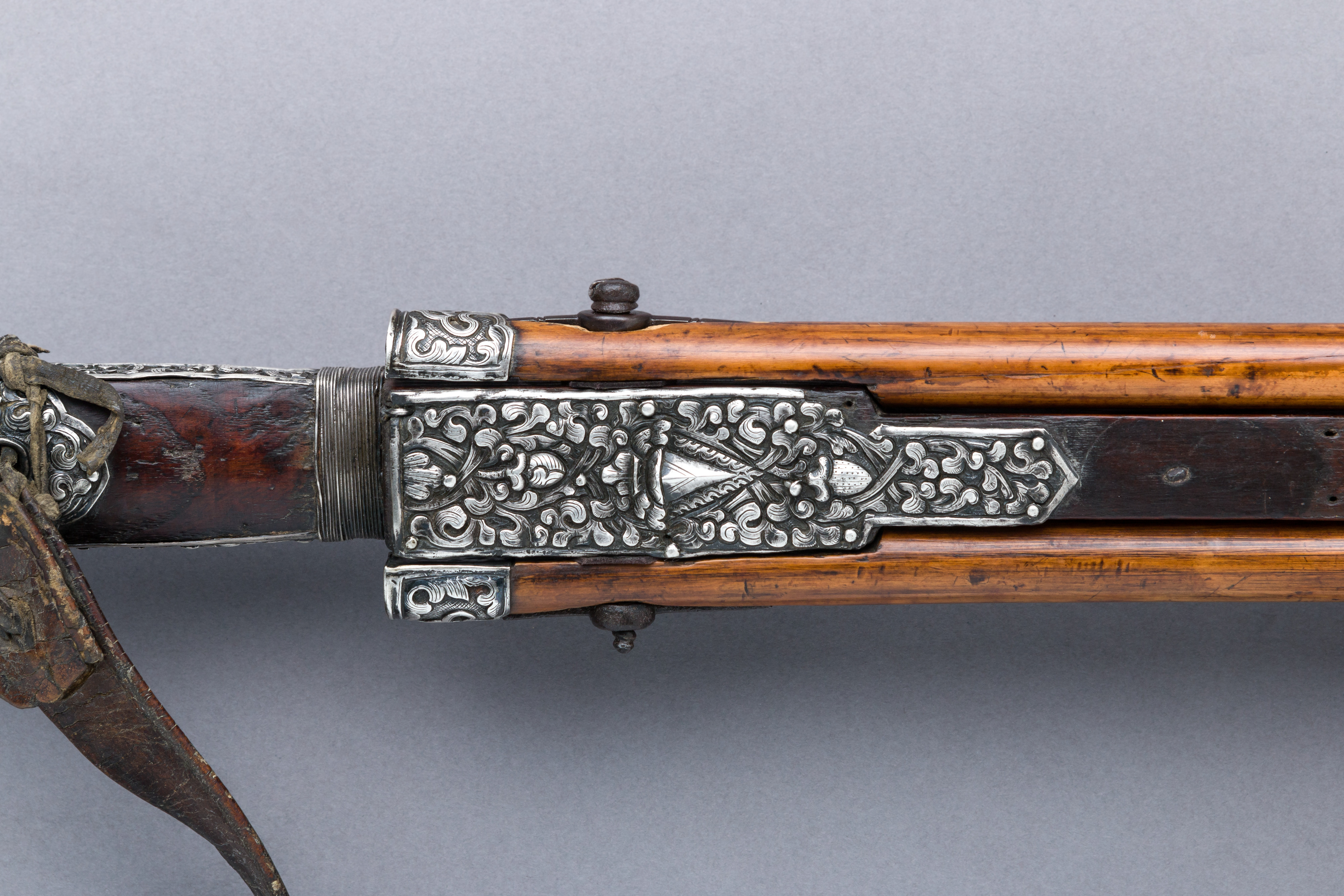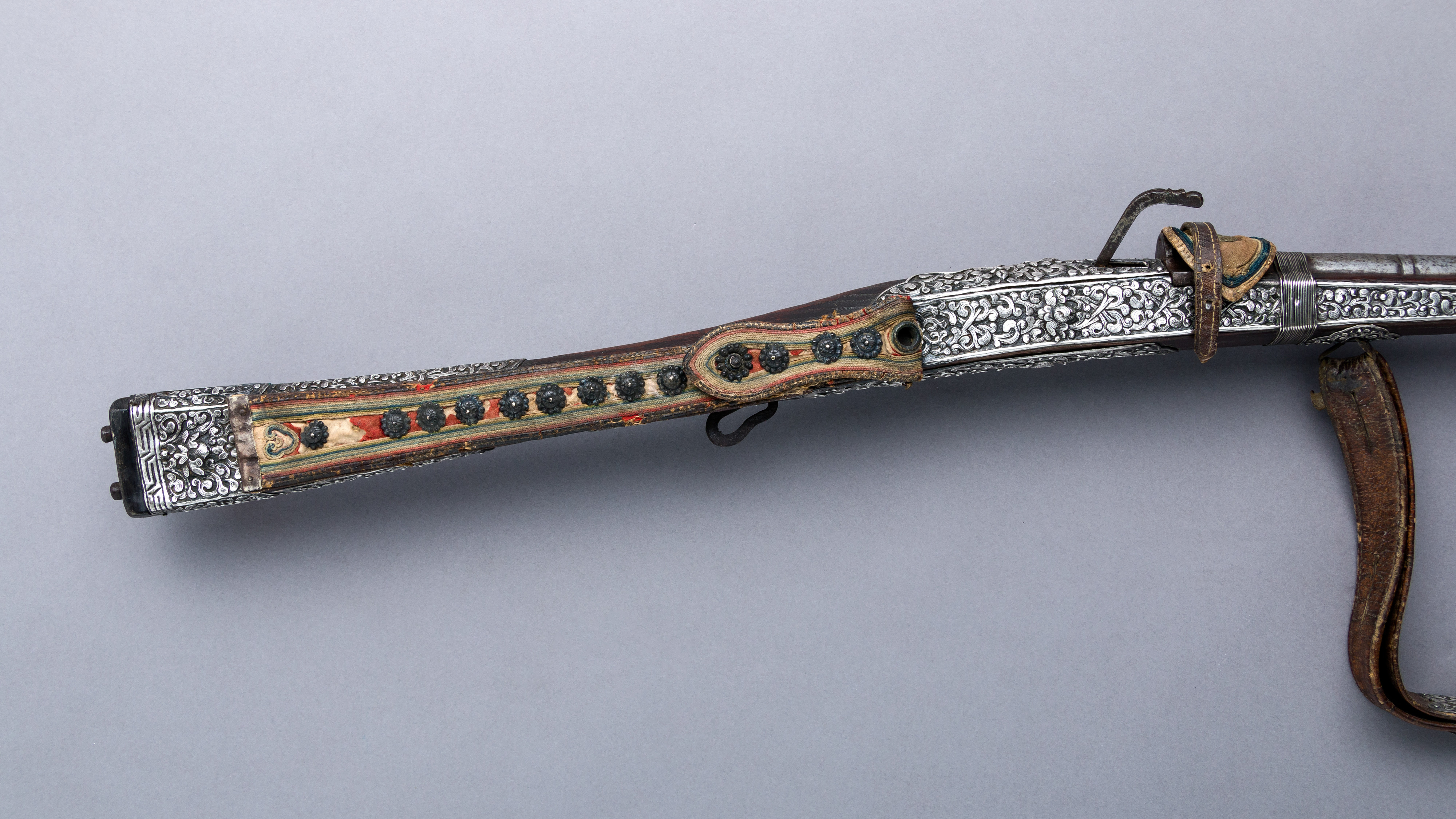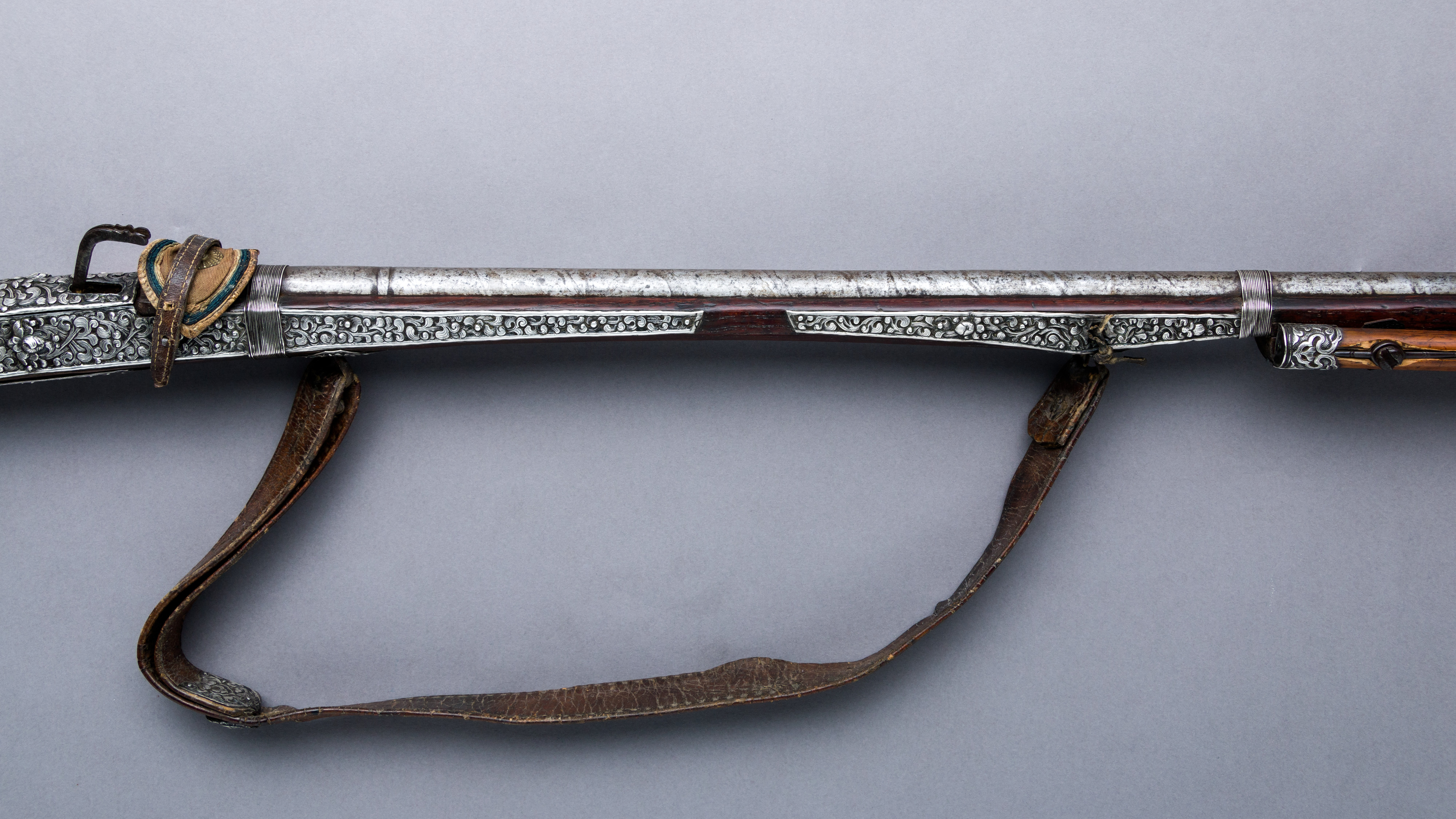Matchlock Musket (me mda')
Matchlock muskets were first introduced into Tibet during the 16th or 17th century, probably via China and India or through other trade routes or diplomatic contacts. Although more technologically advanced forms of firearms were known in Tibet by the late 19th century, matchlocks continued to be used regularly well into the 20th century. Most Tibetan matchlocks are plain, functional hunting weapons, with little or no ornament (see 36.25.2173 and 36.25.2174). There are a few rare Tibetan firearms that, by their decoration, can be identified as votive or ritual objects (see 2001.34 and 2005.143). The third broad category of Tibetan firearms, to which this example belongs, comprises muskets with varying degrees of decoration, but fully functional and intended for secular use. The workmanship of the embossed silver plaques covering its stock has many parallels, in terms of style, technique, and design, in secular and religious silver objects produced in Tibet in the late 19th and early 20th century. Decorated muskets of this type were carried by individuals taking part in festivals, on ceremonial occasions, or by the guards of persons of rank. Horseback archery and target shooting with muskets were the focus of a ceremony called "The Gallop behind the Fort," which was the last event of the annual month-long New Year Festival held in the Tibetan capital, Lhasa. All Tibetan lay officials were tested in these skills until at least the late 1940s, and other shooting contests involving muskets were held annually during the same period. In any of these events, elaborately decorated muskets like this may have been used or displayed.
The plain stock of dark wood is fitted with several silver plaques embossed in low relief with bold symmetrical designs featuring central blossoms set among arrangements of leafy scrollwork. The undecorated barrel is round in section, with spiral marks on its surface indicating that it was hammer welded in a twist-forged technique. The chamfered muzzle flares out slightly and has a simple bead sight of brass or copper. There is a peep sight at the base of the breech. The priming pan extends out from beneath the touchhole at the right side of the breech. The barrel is lashed to the stock in three places with multiple strands of silver wire. The ornamental plaques are attached to the stock by silver nails and are found on the sides and underside of the full-length forestock, on the sides, top, and underside of the lock area, at the heel and toe of the butt, and wrapping around the base of the butt, which is fitted with a simple horn butt cap. The exceptionally long bipod musket rest is attached by a screw that passes transversely through the horn block, a slightly widened and squared off area near the midpoint of the forestock. Each prong of the rest consists of two sections of about equal length: a straight upper shaft of wood joined to a lower section of horn, the horn curving slightly towards the tip. Where the wood and horn sections meet there is a silver collar decorated with three bands of ornament. A silver tab, engraved with floral designs, extends from the collar along one side of the upper third of each horn. The silver plaque on the underside of the horn block is decorated with a Wish-Granting Jewel motif set among leafy scrollwork. The iron match-holder, or serpentine, protrudes from a slot in the silver plaque behind the breech of the barrel. The trigger, in the form of a short iron loop, protrudes from a slot in the silver plaque on the underside of the stock. A flat and narrow textile pouch, for storing unused match cord, is attached to the outer side of the butt. The pouch is faced with the remains of red wool, edged with multicolor herringbone trim and shagreen piping. It has nine embossed silver rosettes on the body of the pouch and four on its cover flap. An oval patch made of similar materials is attached to the inner side of the stock next to the breech and is secured by a leather strap over top of the breech and priming pan. A leather shoulder strap, or sling, is attached to the underside of the forestock. The ramrod is missing.
Due to rights restrictions, this image cannot be enlarged, viewed at full screen, or downloaded.
This artwork is meant to be viewed from right to left. Scroll left to view more.
